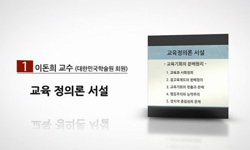Since studies on wooden documents excavated in South Korea have been advanced, issues regarding ‘standardization’ and ‘systematization’ were raised in terms of organizing and categorizing wooden documents. However, they were still individual p...
http://chineseinput.net/에서 pinyin(병음)방식으로 중국어를 변환할 수 있습니다.
변환된 중국어를 복사하여 사용하시면 됩니다.
- 中文 을 입력하시려면 zhongwen을 입력하시고 space를누르시면됩니다.
- 北京 을 입력하시려면 beijing을 입력하시고 space를 누르시면 됩니다.

한국 출토 목간의 분류와 정리 및 표준화 방안 = Reorganization and Standardization of Wooden Documents Excavated in South Korea
한글로보기https://www.riss.kr/link?id=A106518685
-
저자
이재환 (중앙대학교)
- 발행기관
- 학술지명
- 권호사항
-
발행연도
2019
-
작성언어
Korean
-
주제어
목간 ; 정의 ; 일련번호 ; 범례 ; 표준화 ; 형식분류 ; wooden documents(木簡) ; definition ; numbering ; legend ; standardization ; categorization
-
등재정보
KCI등재
-
자료형태
학술저널
-
수록면
15-40(26쪽)
-
KCI 피인용횟수
0
- DOI식별코드
- 제공처
-
0
상세조회 -
0
다운로드
부가정보
다국어 초록 (Multilingual Abstract)
The number that identifies each wooden document is the name of it. Making easy to identify and search, that is why numbering fundamentally. Therefore, we should not give the same name to different wooden documents, and should not give several names to one wooden document. So far, it has been very confusing to identify wooden documents in Korea, for one wooden document has more than three names. The most basic direction is to follow the number in the excavation report, but it is not possible practically because a lot of research are carried out on excavated wooden documents before the publication of the excavation report. As a general rule, it should be recommended to use the number assigned at the initial disclosure in all subsequent studies, catalogs, reports, etc. Nevertheless, the manner to display the assigned numbers may also vary. It can lead to confusion in search in the future. The Korean Society for the Study of Wooden Documents must list all the numbers and titles used for wooden documents so far, and specify the standard notation in the journal each year. The standardization of terminology should also be established by the society.
And categorization criteria are not uniformed yet, so they vary from researcher to researcher. I proposed a code system by appearance for wooden documents in this paper. More important than proposing a criterion or method is the further discussion and conclusion. In Korea, the Korean Society for the Study of Wooden Documents could be the center for those discussions. Through the process of ‘consensus’ and ‘accreditation’, standardized results would be produced soon, I hope.
Since studies on wooden documents excavated in South Korea have been advanced, issues regarding ‘standardization’ and ‘systematization’ were raised in terms of organizing and categorizing wooden documents. However, they were still individual proposals, so it was not possible to draw conclusions by exchanging opinions constructively. First of all, the definition of ‘wooden document’ is not fully agreed on yet. Even the quantity of wooden documents in South Korea can vary widely according to the definition. In the past, wooden document was often defined based on the purpose or form of it. But figuring out the creator’s intent or guessing its purpose without text can be arbitrary. Therefore, I propose to define wooden document as “wooden item on which text has written” and to add a provisory clause such as “except one made for printing and stamping”.
The number that identifies each wooden document is the name of it. Making easy to identify and search, that is why numbering fundamentally. Therefore, we should not give the same name to different wooden documents, and should not give several names to one wooden document. So far, it has been very confusing to identify wooden documents in Korea, for one wooden document has more than three names. The most basic direction is to follow the number in the excavation report, but it is not possible practically because a lot of research are carried out on excavated wooden documents before the publication of the excavation report. As a general rule, it should be recommended to use the number assigned at the initial disclosure in all subsequent studies, catalogs, reports, etc. Nevertheless, the manner to display the assigned numbers may also vary. It can lead to confusion in search in the future. The Korean Society for the Study of Wooden Documents must list all the numbers and titles used for wooden documents so far, and specify the standard notation in the journal each year. The standardization of terminology should also be established by the society.
And categorization criteria are not uniformed yet, so they vary from researcher to researcher. I proposed a code system by appearance for wooden documents in this paper. More important than proposing a criterion or method is the further discussion and conclusion. In Korea, the Korean Society for the Study of Wooden Documents could be the center for those discussions. Through the process of ‘consensus’ and ‘accreditation’, standardized results would be produced soon, I hope.
국문 초록 (Abstract)
각 목간들을 식별할 수 있게 해주는 일련번호는 그들의 이름에 해당하는데, 일련번호를 부여하는 근본적 의의는 식별과 검색의 용이성이라는 측면에서 찾아야 할 것이다. 하나의 이름이 여러 개의 목간에 부여되거나, 하나의 목간에 여러 개의 이름이 붙지 않도록 하는 것이 핵심이라고 하겠다. 지금까지 한국의 목간 정리에 있어서 가장 큰 문제는 하나의 목간에 여러 개의 이름을 붙여 버렸다는 점이다. 가장 기본적인 방향성은 발굴보고서의 일련번호를 따르는 것이겠지만, 현실적으로는 발굴보고서가 발간되기 이전에 이미 해당 유적 출토 목간에 대한 연구가 많은 연구자들에 의해 진행·발표되므로, 발굴보고서 이전 단계의 일련번호가 사용되지 않을 수 없다. 발굴기관에서 목간을 최초 공개·보고할 때 부여한 번호를 원칙적으로 이후의 모든 연구서와 도록·보고서 등에서 가능한 한 바꾸지 않고 사용할 것을 권고해야 하겠다. 일련번호가 하나로 확정되어도 그것을 구체적으로 표기하는 방식이 개인마다 다르기 때문에 향후 검색에 있어서 혼란을 가져올 가능성이 있다. 한국목간학회에서 지금까지 공개된 목간들의 호칭들을 정리하고, 표준 표기 방식을 지정하는 표를 학회지에 만들어 싣는 것이 좋겠다. 아울러 한국목간학회의 판독문 범례 및 용어 표준화안 또한 확정될 필요가 있다.
비슷한 유형의 목간을 모을 분류 기준 또한 연구자 별로 각자의 기준을 제시해 둔 정도의 상태이다. 특히 통일이 필요해 보이는 부분은 형태에 따른 분류 방법이다. 日本의 형식 분류를 참조하고, 한국 출토 목간의 특징을 고려한 외형 코드 및 상·하단 형태 코드를 만들어 보았다. 기준이나 방법을 제안하는 것보다 중요한 것은 그 이후 논의의 진행이다. 한국에서 그러한 논의의 주체는 역시 한국목간학회가 되어야 한다고 본다. 어떤 식으로든 ‘합의’와 ‘공인’의 절차를 거쳐, 빠른 시일 내에 많은 연구자들이 따를 만한 표준화의 결과물이 만들어져 나오기를 희망해 본다.
한국 목간의 연구가 본격화되면서 그 정리나 분류에 있어서 ‘표준화’나 ‘체계화’에 대한 문제 제기도 나오고 있지만, 아직 본격적인 의견 교환 및 결론 도출에 이르지는 못하였다. 우선...
한국 목간의 연구가 본격화되면서 그 정리나 분류에 있어서 ‘표준화’나 ‘체계화’에 대한 문제 제기도 나오고 있지만, 아직 본격적인 의견 교환 및 결론 도출에 이르지는 못하였다. 우선 ‘목간’의 정의조차 충분히 합의되지 못한 상태로서, 정의에 따라 한국 출토 목간의 수량 파악 자체가 크게 달라질 수 있다. 기존에는 제작 의도나 형태에 기반하여 목간을 정의한 경우가 많았는데, 이 경우 의도 파악이나 묵서가 없는 목제품의 성격 추정에 있어서 자의성이 문제가 될 수 있다. 이에 ‘文子가 書寫된 木製品’으로 정의하고 ‘捺印·印出을 위한 것은 제외한다’ 등의 단서를 부가할 것을 제안한다.
각 목간들을 식별할 수 있게 해주는 일련번호는 그들의 이름에 해당하는데, 일련번호를 부여하는 근본적 의의는 식별과 검색의 용이성이라는 측면에서 찾아야 할 것이다. 하나의 이름이 여러 개의 목간에 부여되거나, 하나의 목간에 여러 개의 이름이 붙지 않도록 하는 것이 핵심이라고 하겠다. 지금까지 한국의 목간 정리에 있어서 가장 큰 문제는 하나의 목간에 여러 개의 이름을 붙여 버렸다는 점이다. 가장 기본적인 방향성은 발굴보고서의 일련번호를 따르는 것이겠지만, 현실적으로는 발굴보고서가 발간되기 이전에 이미 해당 유적 출토 목간에 대한 연구가 많은 연구자들에 의해 진행·발표되므로, 발굴보고서 이전 단계의 일련번호가 사용되지 않을 수 없다. 발굴기관에서 목간을 최초 공개·보고할 때 부여한 번호를 원칙적으로 이후의 모든 연구서와 도록·보고서 등에서 가능한 한 바꾸지 않고 사용할 것을 권고해야 하겠다. 일련번호가 하나로 확정되어도 그것을 구체적으로 표기하는 방식이 개인마다 다르기 때문에 향후 검색에 있어서 혼란을 가져올 가능성이 있다. 한국목간학회에서 지금까지 공개된 목간들의 호칭들을 정리하고, 표준 표기 방식을 지정하는 표를 학회지에 만들어 싣는 것이 좋겠다. 아울러 한국목간학회의 판독문 범례 및 용어 표준화안 또한 확정될 필요가 있다.
비슷한 유형의 목간을 모을 분류 기준 또한 연구자 별로 각자의 기준을 제시해 둔 정도의 상태이다. 특히 통일이 필요해 보이는 부분은 형태에 따른 분류 방법이다. 日本의 형식 분류를 참조하고, 한국 출토 목간의 특징을 고려한 외형 코드 및 상·하단 형태 코드를 만들어 보았다. 기준이나 방법을 제안하는 것보다 중요한 것은 그 이후 논의의 진행이다. 한국에서 그러한 논의의 주체는 역시 한국목간학회가 되어야 한다고 본다. 어떤 식으로든 ‘합의’와 ‘공인’의 절차를 거쳐, 빠른 시일 내에 많은 연구자들이 따를 만한 표준화의 결과물이 만들어져 나오기를 희망해 본다.
참고문헌 (Reference)
1 木簡学会, (二) : 1980
2 木簡学会, (三三) : 2011
3 최상기, "함안 성산산성 출토 목간의 정리현황 검토" (11) : 2013
4 국립가야문화재연구소, "함안 성산산성 발굴조사 보고서 Ⅴ" 2014
5 국립가야문화재연구소, "함안 성산산성 발굴조사 보고서 Ⅳ" 2011
6 최상기, "함안 성산산성 목간의 정리현황 검토"
7 권인한, "한국고대문자자료 연구 백제(상·하)" 주류성 2015
8 윤선태, "한국고대목간의 형태와 종류" 한국역사연구회 (65) : 157-185, 2007
9 朱甫暾, "한국 목간 연구의 현황과 전망" (創刊) : 2008
10 임경희, "태안 마도 수중 출토 목간 판독과 내용" (5) : 2010
1 木簡学会, (二) : 1980
2 木簡学会, (三三) : 2011
3 최상기, "함안 성산산성 출토 목간의 정리현황 검토" (11) : 2013
4 국립가야문화재연구소, "함안 성산산성 발굴조사 보고서 Ⅴ" 2014
5 국립가야문화재연구소, "함안 성산산성 발굴조사 보고서 Ⅳ" 2011
6 최상기, "함안 성산산성 목간의 정리현황 검토"
7 권인한, "한국고대문자자료 연구 백제(상·하)" 주류성 2015
8 윤선태, "한국고대목간의 형태와 종류" 한국역사연구회 (65) : 157-185, 2007
9 朱甫暾, "한국 목간 연구의 현황과 전망" (創刊) : 2008
10 임경희, "태안 마도 수중 출토 목간 판독과 내용" (5) : 2010
11 이승률, "죽간·목간·백서, 중국 고대 간백자료의 세계1" 예문서원 2013
12 이경섭, "신라·백제 목간의 비교 연구"
13 이경섭, "신라 목간의 세계" 경인문화사 2013
14 박지현, "백제 목간의 유형분류현황 검토"
15 윤선태, "목간이 들려주는 백제 이야기" 주류성 2007
16 윤선태, "목간의 형태와 용도분류에 대한 기초적 제안" 2013
17 임경희, "마도3호선 목간의 현황과 판독" (8) : 2011
18 임경희, "마도2호선 발굴 목간의 판독과 분류" (6) : 2010
19 國立昌原文化財硏究所, "개정판 韓國의 古代木簡"
20 국립가야문화재연구소, "韓國의 古代木簡 Ⅱ" 2017
21 윤선태, "韓國의 古代木簡" 國立昌原文化財硏究所 2004
22 國立昌原文化財硏究所, "韓國의 古代木簡" 2004
23 손환일, "韓國木簡字典" 국립가야문화재연구소 2011
24 이용현, "韓國木簡基礎硏究" 신서원 2006
25 文化公報部 文化財管理局, "雁鴨池 發掘調査報告書" 1978
26 陳偉, "里耶秦簡校釋" 文物出版社 2012
27 李均明, "秦漢簡牘文書分類集解" 文物出版社 2008
28 大庭 修, "木簡【古代からのメッセージ" 大修館書店 1998
29 이경섭, "新羅木簡의 출토현황과 분류체계 확립을 위한 試論" 신라문화연구소 42 : 81-110, 2013
30 文化公報部 文化財管理局, "新安海底遺物 (綜合編)" 1988
31 국립창원문화재연구소, "咸安 城山山城Ⅲ" 2006
32 國立昌原文化財硏究所, "咸安 城山山城Ⅱ" 2004
33 國立昌原文化財硏究所, "咸安 城山山城" 1998
34 李均明, "古代简牘" 文物出版社 2005
35 中國簡牘集成編輯委員會, "中國簡牘集成"
동일학술지(권/호) 다른 논문
-
제국을 향해 나아간 拓跋鮮卑의 300년 여정, 그 흔적을 따라서 -2019년 목간학회 하계 답사 보고-
- 한국목간학회
- 이승호
- 2019
- KCI등재
-
학회소식, 학술대회, 정기발표회, 한국고대문자자료 연구모임
- 한국목간학회
- 편집부(편집자)
- 2019
- KCI등재
-
- 한국목간학회
- 박초롱
- 2019
- KCI등재
-
- 한국목간학회
- 권인한
- 2019
- KCI등재




 DBpia
DBpia







